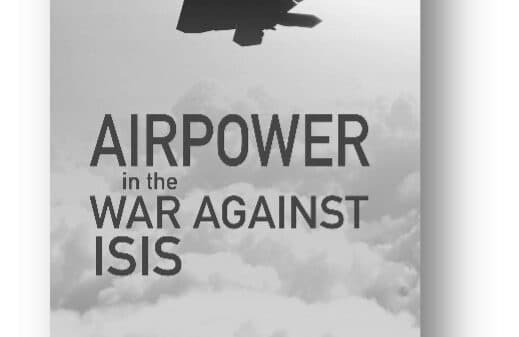ISBN 1612008771, Casemate Publishers, July 2020, 337 pages, $20.50
Reviewed by: William “Stone” Holden, U.S. Marine Corps
If you’re looking for an action-packed, guns-blazing, door-kicking account of a special operations raid, Phoenix Rising: From the Ashes of Desert One to the Rebirth of U.S. Special Operations is not for you. Keith Nightingale’s book is a thoughtful peek behind the curtains at one of the most ambitious special operations missions ever conceived. It is presented humbly, from the eyes of the junior members of the planning team, with no airs or attempts to make it something that it wasn’t. For those very reasons, this book is almost impossible to put down. Phoenix Rising is a unique and engaging read, providing a new perspective on the well-documented Operation Eagle Claw. The book focuses on the dramatic buildup to the raid and the whirlwind it left behind in U.S. national security policy and the special operations community. Even for those familiar with the events and the subsequent impact on the special operations community, this book is worth the read.
U.S. Army Colonel Keith M. Nightingale (Ret.) was the junior member of the Joint Task Force Eagle Claw planning team. He served as the Deputy Operations Officer as the team developed and executed options for resolving the Iranian hostage crisis of 1979-1981. The book proceeds in three main sections. The first chronicles the author’s time in the lead-up to Operation Eagle Claw, the second section discusses the actual raid itself, and the final section is an in-depth review of the impact on the structure of the special operations community and national defense policy overall.
The planning details are taken almost entirely from Colonel Keith Nightingale’s journal entries during that time and cover a wide range of daily topics that would accompany such a unique position. The style and content evoke familiar memories of hastily jotted notes in little green notebooks during mind-numbing meetings and the frustration that comes with trying to plan the impossible. This has the effect of drawing the reader in and making it a profoundly personal read at times. His journal entries reveal some gripping elements of the incredible intelligence work required to lay the foundation for the operation, including some harrowing moments on the path to a viable plan for a hostage rescue attempt. Scattered throughout the heavier passages are lighter moments that most readers will find easy to chuckle at, having been in similar shoes at some points in any military career. With a dry wit, he describes receiving instructions that (even under the most intense scrutiny) simply contradict themselves; the pains of working through the twisted logic of trying to procure food and drinks for some of the world’s most elite service members; accomplishing everything needed without leaving a paper trail (or even having a budget). Across the entire work, the reader can feel the sheer weight of the responsibility of making the impossible possible, all with dozens of lives on the line.
The raid itself serves as the pivot point for the book, receiving only a relatively brief description before the transition to the resulting policy battles. The book does not go very deeply into the details of the raid on the ground but instead focuses on the coordination and maintenance issues that ultimately made the mission non-viable. The author repeatedly focuses on the failure of the Navy to fly the flight profiles requested with their helicopters, designed to stress the platforms before the mission. This was undoubtedly a critical factor that may have contributed to the failure of some of the aircraft during the mission, but the author repeats his concerns almost verbatim in multiple areas of the book, becoming distracting. Nightingale uses the mission’s failure to then dive into the battles that rippled through the heights of the Pentagon and the halls of Congress after the catastrophe.
The book proceeds into a deep examination of this inflection point in U.S. defense policy. The capabilities needed to confront the most pressing threats of the time were known but could not be coordinated in a way that would make them successful. The author uses the last section of the book to chronicle the back-and-forth between Service chiefs, Congress, and those involved with the Special Operations Forces (SOF) community. Petty bureaucracy and territorial politics drove senior leaders to hoard resources and personnel, driven unintentionally by the rules of a system built to encourage just that. Most of the pieces needed to do the job existed, but the organizational structure and the processes left them scrambling to assemble for the task at hand. Out of the tangled mess described by Nightingale, some fascinating details surrounding the foundations for the modern SOF structure emerge.
The author is clear from the beginning that this is a personal narrative and not an academically sourced piece. For much of the book, that makes sense because he draws from the pages of his own journals. While this style benefits the reader by making it more engaging, the downsides become increasingly evident in the book’s latter half. Descriptions of the policy battles to create the modern SOF infrastructure are provided. At this point, supporting references would have significantly strengthened the arguments that the author makes and provided greater clarity for where he sourced some of the information. A large number of meetings and decisions are mentioned without much to back up the author’s insights into them. Additionally, it is easy for a reader to find themselves wishing that the author—with many more years of experience since his days as a Major in the book—would have provided more depth and discussion to his entries. What would he have gone back to change in the way he supported the development? Was there some hindsight that he developed from his later years of service? What lessons does he feel are critical to take away for the next generation? Unfortunately, the book is silent in that regard, and there were a lot of opportunities left on the pages to educate Service members through his story.
Overall, this book is a fascinating read covering a critical pivot point for the U.S. defense enterprise as a whole and the SOF community in particular. Colonel Nightingale delivers the story from a unique perspective, presented in a style that feels intimate and instantly recognizable. This serves as an excellent tool for understanding the history of the SOF community and a reflection point on what changes tomorrow’s conflicts will require. The U.S. finds itself at another historical inflection point, where a shift away from the Global War on Terror and back to great power competition will demand different responses and capabilities than those relied upon over the last two decades. This book is a testament to how messy the fights to develop exceptional capabilities can be and the painful cost of waiting for failure to make the point that change is needed. With China and Russia rapidly modernizing their forces, including significant investments in unmanned and artificial intelligence-driven capabilities, this book is more relevant than ever.
















